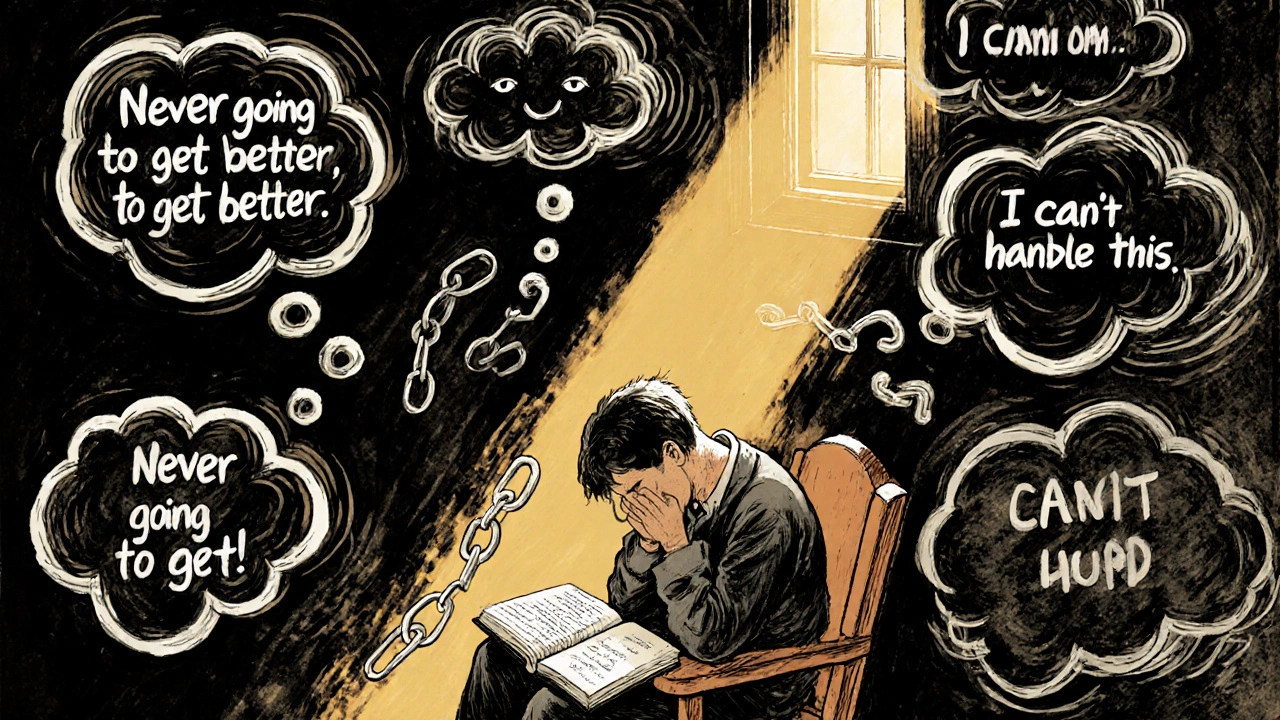Want faster ways to feel less anxious or get out of a low mood? Cognitive behavioral therapy (CBT) is a short-term, skills-focused approach that teaches you how thoughts, feelings, and actions link together. Therapists use simple steps so you can spot unhelpful thinking and try different behaviors that actually work.
CBT is used for anxiety, depression, insomnia, PTSD, OCD, phobias, and some pain conditions. It’s not a vague “talking cure.” You and a therapist pick specific problems, set clear goals, try small experiments between sessions, and track what changes. Many people notice improvement in 6–20 sessions when they practice the skills outside therapy.
CBT trains you to catch automatic negative thoughts — the quick judgments that trigger panic or hopelessness. Once you spot them, you test whether those thoughts are true and replace extreme beliefs with more balanced ones. You also change what you do: for example, facing avoided situations step by step or scheduling activities that lift mood. This mix of thinking and doing rewires how your brain responds to stress.
Expect a practical, goal-oriented conversation. Early sessions focus on problems and targets. Later sessions include role-play, relaxation exercises, sleep plans, or exposure tasks. Therapists give "homework": small tasks to practice skills in real life. Homework is the engine of CBT — skip it and progress stalls.
CBT works well alone, or combined with medication when needed. For moderate to severe depression or anxiety, meds can reduce symptoms so you can use CBT skills more effectively. Talk with your doctor about what suits you: there’s no one-size-fits-all plan.
If cost or access is a problem, try online CBT programs or guided self-help books from trusted sources. Many digital programs include modules, exercises, and brief coach support. They’re not identical to in-person therapy, but research shows they help, especially when you follow the program consistently.
Quick CBT tools you can use today: keep a thought record for one week; when you feel bad, write the situation, your thought, the feeling, and one balanced alternative thought. Practice 10 minutes of diaphragmatic breathing daily to lower baseline anxiety. Schedule a small activity you enjoy three times this week and note mood before and after.
When to seek professional help: if daily functioning is dropping, suicidal thoughts appear, or symptoms last despite self-help, contact a mental health professional. A trained CBT therapist adapts techniques to your history and keeps you safe when emotions run high.
Finding a therapist: look for someone trained in CBT, check credentials, ask about experience with your problem, and see if their style fits you. A good fit matters more than a perfect credential list.
CBT is practical, evidence-based, and skill-focused. It gives tools you can use long after therapy ends, helping you manage future setbacks with less stress and more control.
Start small, track progress weekly, and celebrate each improvement as proof you're moving forward.

